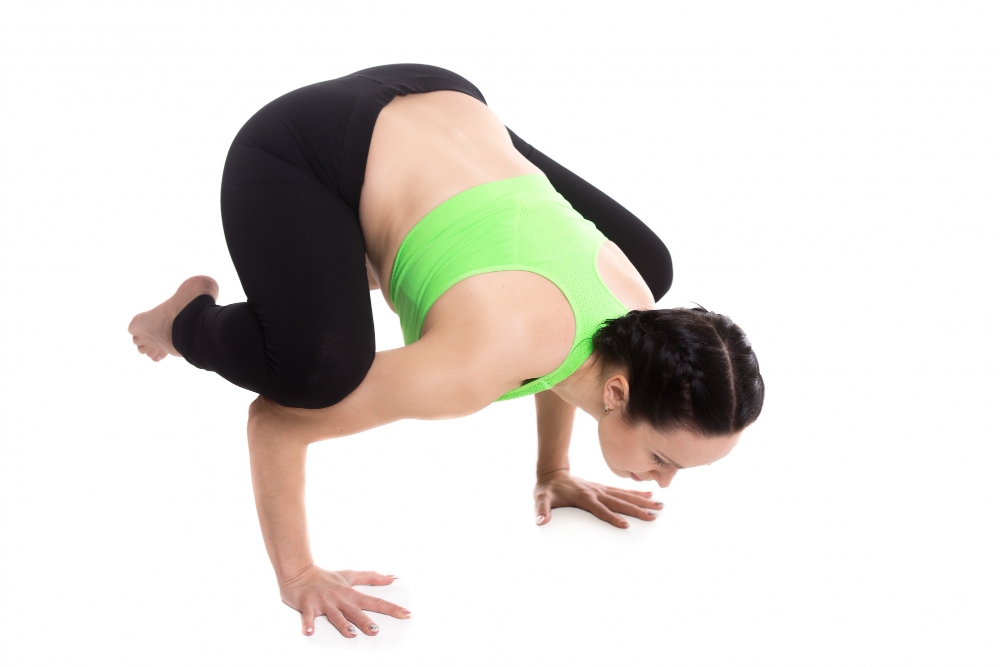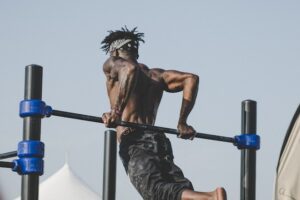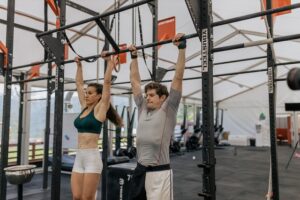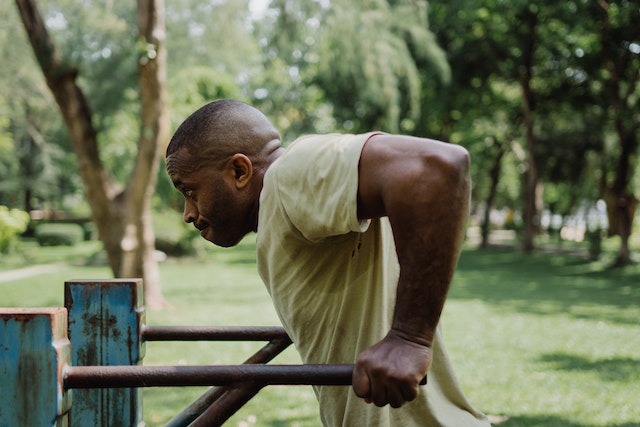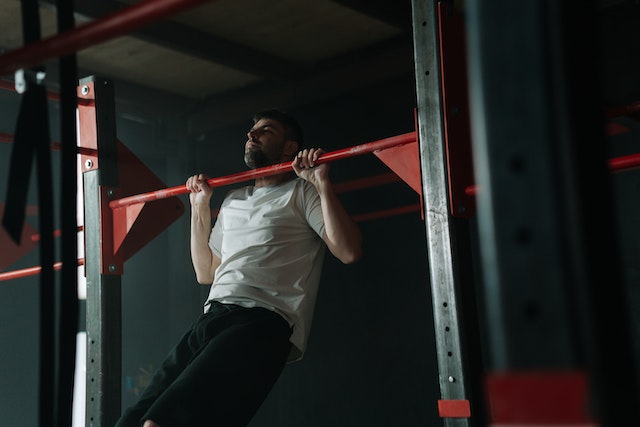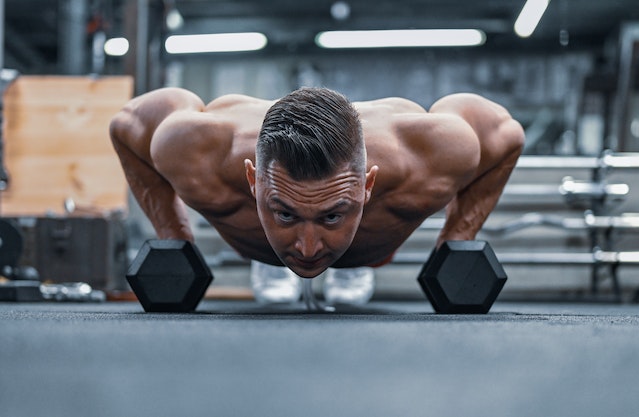Frog stand is a basic calisthenics skill that every athlete should be able to do. It’s essential to master the frogstand to unlock other skills like handstand or planche. In this article, you will learn what frog stand is, its progressions, and its proper form
What is a frog stand?
Frog stand is one of the easiest calisthenics skills. It’s a great starting move for beginners because it’s a balance-based skill in which strength isn’t required so you don’t have to prepare long for this exercise – muscles, and strength, like with many others. You can start with frogstand right away and you will master it pretty fast.
As I already said, a frogstand is all about balance, exactly like a handstand. Furthermore, a frogstand is necessary to master the handstand. It’s one of the best progression for handstand because it teaches you to balance on your hands, in particular working with your fingers.
A frog stand consists of holding body weight only on hands by bending the legs and resting the knees on the elbows.
Muscles worked during the frog stand
Frog stand works most of the major upper body muscles
The primary muscles worked in the frog stand are:
- deltoids
- pectoralis major
- triceps brachii
- forearms
- wrists
Additional secondary muscles worked include:
- biceps
- core muscles
- pectoralis minor
How to perform frog stand
Step-by-step guide on how to perform frog stand
- Do a deep squat and extend your knees to the sides.
- Keep your hands shoulder-width apart and place them in front of your feet (elbows should touch the inside of your knees).
- Lean your torso forward gradually shifting your weight to your arms.
- Slowly, resting your knees on your elbows, lift your feet off the ground.
- When your feet are off the ground, fold your legs up and try to stay in that position for as long as possible.
Beginners will find it difficult to transfer the entire body weight to their hands at once. They should gradually lift their feet off the ground and try to stay in this position as long as possible. At first, it will be a few seconds, but as you progress, it will be up to a minute or more.
Tips
Few tips to make it easier for you to learn the frog stand
Safety
When you do a frog stand and you won’t be able to keep your balance, you will land on your face. So every time you do a frogstand put a pillow before you, that will make the landing painless.
When starting to learn frogstand the biggest obstacle is the fear of falling. If you have a pillow in front of you and you have landed on it several times, you already know that it’s nothing scary.
Record yourself
Record yourself and watch back to monitor your form. By watching the video you can see exactly from the side what your form looks like and what else needs to be improved
Variations
If you’ve already mastered the frog stand, you might want to try these more advanced variations
advanced frog stand
In advanced frog stand the arms are straight instead of bent as in regular frogstand. To progress toward this variation, start slowly straightening your arms and leaning a little less forward.
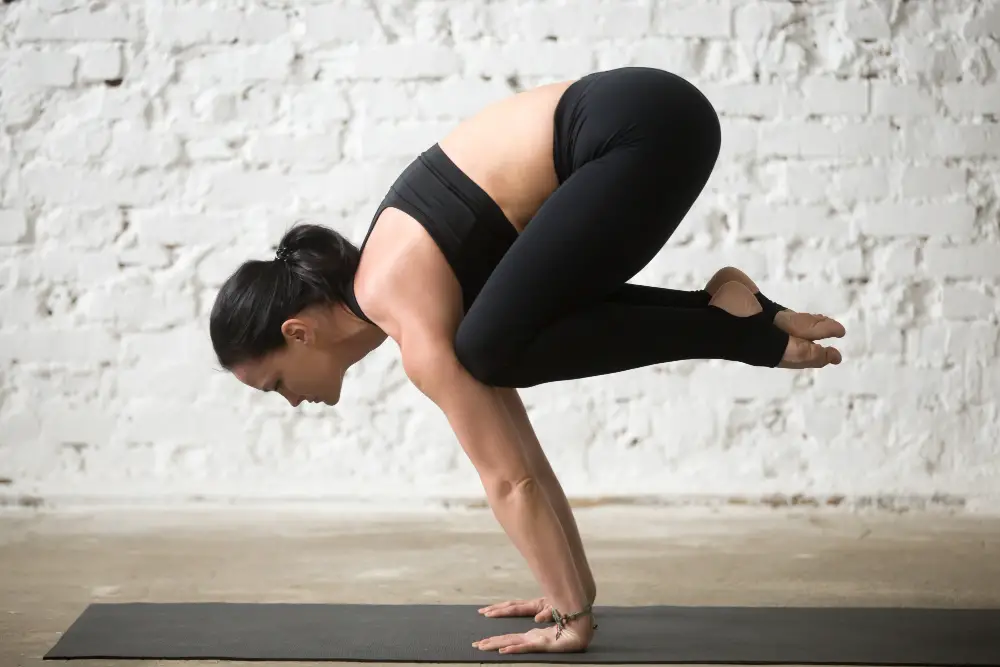
One leg frog stand
Keep only one leg on the elbow and manipulate with the other. You can move that one leg from side to side or even straighten your leg.
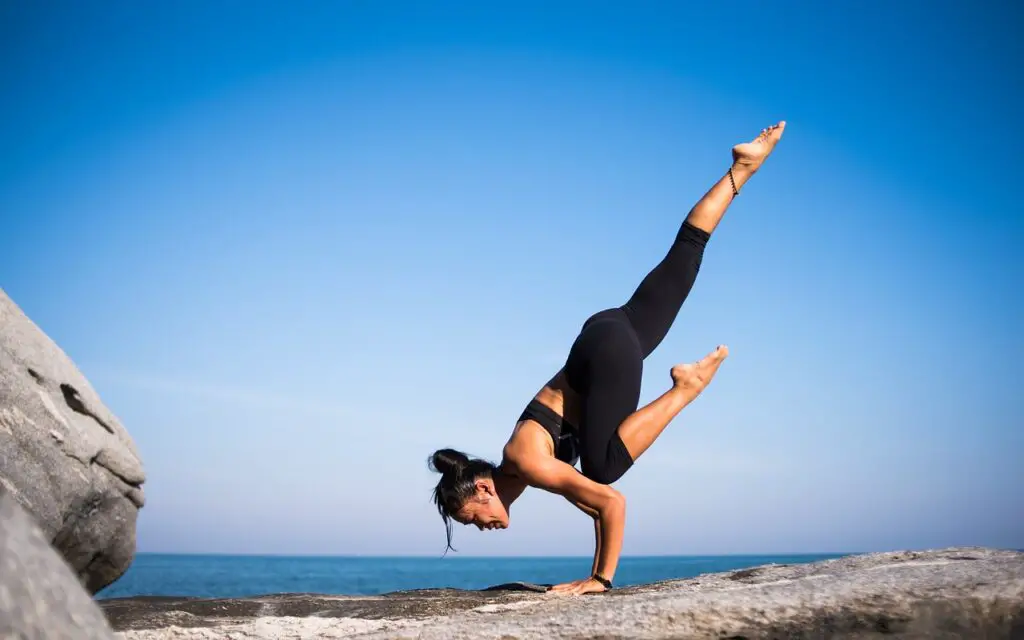
Frog stand to handstand
The transition from frog stand to handstand is a much more advanced move, that requires you to be able to do a handstand. It’s a great way to learn the handstand press.
